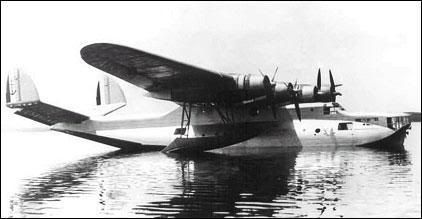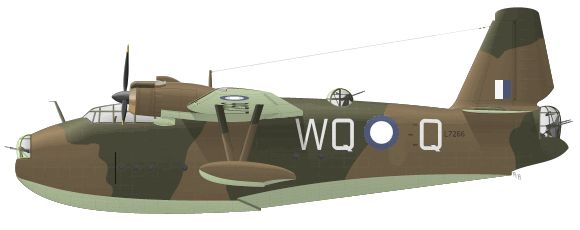You are not logged in.
Dear visitor, welcome to WesWorld. If this is your first visit here, please read the Help. It explains in detail how this page works. To use all features of this page, you should consider registering. Please use the registration form, to register here or read more information about the registration process. If you are already registered, please login here.






Quoted
Originally posted by Rooijen10
Kawanishi H7Y
Version H7Y1
Crew: 4
Length: 26.23 m
Wingspan: 40.00 m
Height: 6.27 m
Empty weight: 13500 kg
Loaded weight: 18000 kg
Powerplant: Four Kanzaki I-12B diesel engines, 600 hp each
Maximum speed: 319 km/h
Service ceiling: 6000 m
Range: 9250 km
Armament: One 20mm canon, three 7.7mm machine guns, 1600 kg bombs or two 18" torpedoes
Note: only stats I could find on this plane were crew, range, engines and loaded weight (which I got from forum.valka.cz ) and I used the data of another plane of about the same weight to get the other stats. If anyone has more stats on this plane, it would be greatly appreciated.
Quoted
Dornier Do 26V-6 (D-0)
Vzletová hmotnost: 11 400 kg
Max. vzletová hmotnost: 20 000 kg
Quoted
Yokosuka H7Y1
Hmotnost vzletová / Take-off weight (kg): 18 000
This post has been edited 1 times, last edit by "Rooijen10" (Jul 11th 2009, 7:29pm)
Quoted
Originally posted by Rooijen10
Looking at forum.valka.cz, the Do-26 is actually lighter than the H7Y1.
Quoted
Dornier Do 26V-6 (D-0)
Vzletová hmotnost: 11 400 kg
Max. vzletová hmotnost: 20 000 kg
Quoted
Yokosuka H7Y1
Hmotnost vzletová / Take-off weight (kg): 18 000
... so the normal take-off weight of the Do 26 is 11,400 kg and that of the H7Y1 is 18,000 kg, a 6,600 kg difference. So in that case it would not be a licence built Do-26, but maybe an enlarged version of the Do-26 (since the Do-26 is mentioned in the H7Y text).
Considering that the Do-26 uses a more powerful version of the Jumo 205, that would mean that the H7Y1 would probably be a bit slower than the speed I used.
Forum Software: Burning Board® Lite 2.1.2 pl 1, developed by WoltLab® GmbH
